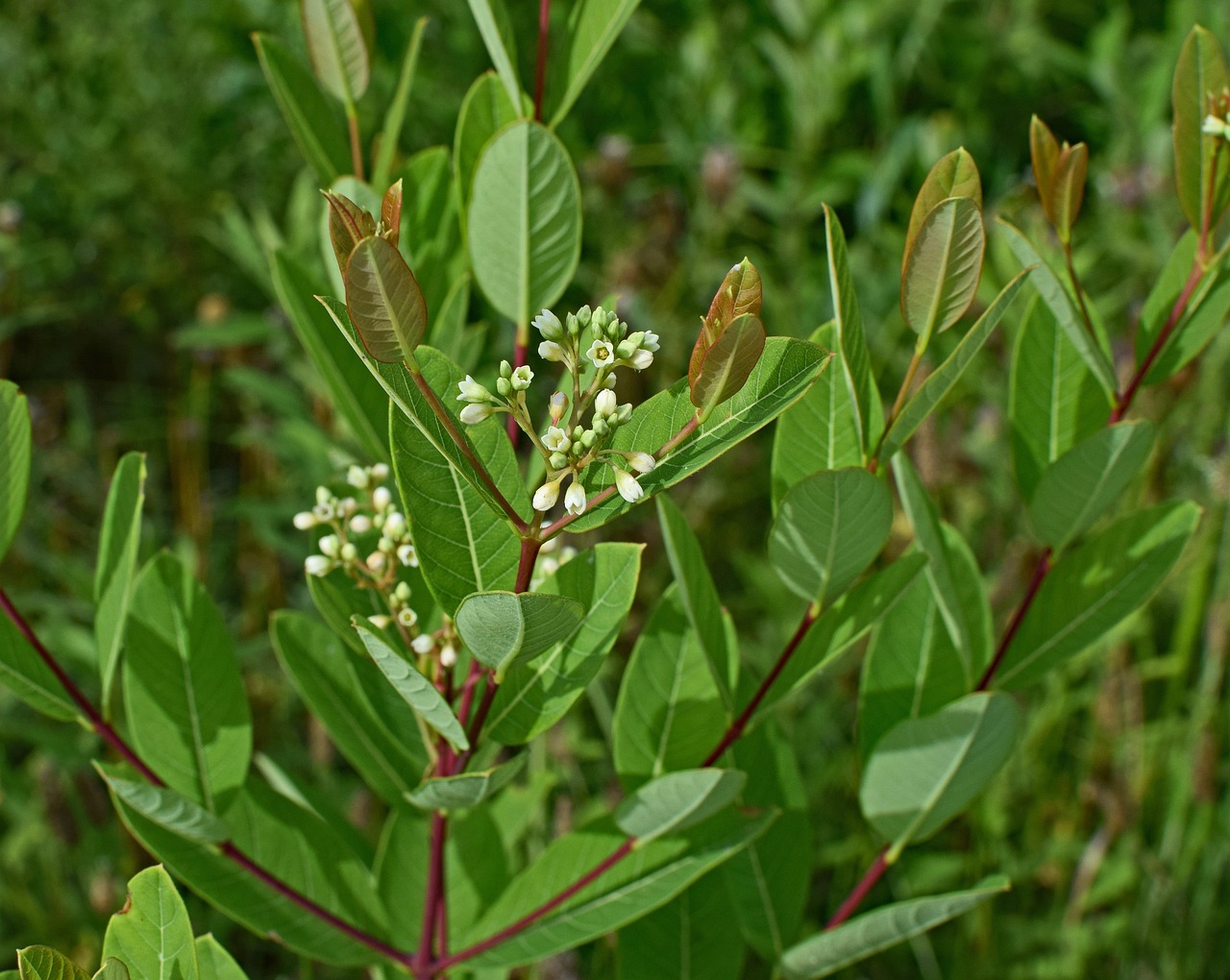Hemp dogbane (Apocynum cannabinum L.) has come rocketing out of the soil to bless us with its presence once again. During the past two weeks, I’ve watched soybeans germinate and struggle to emerge in the cooler wet weather, and, finally, they are 2 inches tall with the first true leaves. In that same time, a patch of hemp dogbane has grown 18 inches. As we plant crops and new forage seedings, this is one of the weeds we will work around as we juggle weather and field management.
Every year, this is a plant that causes a problem for some and is on the list of plants I can always expect to get questions about. It is a perennial species, has a deep and extensive root system and is a poisonous plant to livestock, though they readily show preference to other available forages first.
Mowing will suppress an infestation but can’t eliminate it. This means you may slow its spread for a time, but eventually, a farm manager will have to resort to chemical controls. The good news on this front is that the recommended herbicides are typically glyphosate and 2,4-D applications, which are readily available and already part of many farm programs.
There are many broadleaf weeds we tolerate, but hemp dogbane is a troublesome weed in several crop systems. The roots are expansive and will produce new shoots. Just how expansive? A depth of 4 meters and lateral spread of 6 meters is described in “Weeds of the Northeast” by Neal, Uva, DiTomaso and DiTommaso. This fits nicely with the old iceberg analogy: it’s what you can’t see that is the problem. As we mentioned, mowing is useful, but unlikely to work on its own. It is noted in the Ohio Weed Control Guide that herbicide control works at late bud to flower stage of plant growth. Herbicide application after mowing should be delayed until weeds regrow to a mature stage for the effect on the underground plant parts.
Hemp dogbane is very persistent, and we recommend following up control with further observation for cleanup treatments if necessary. It is always good practice to evaluate soil fertility because good crop fertility goes the distance in lowering the need for herbicide use. However, it could be a plant that is highly competitive and finds its way through a good stand. It will spread by seed (mow before flowering) but the vegetative spread is typically how it reproduces in agronomic fields.
Milkweed is the plant most like hemp dogbane. There is also a “spreading dogbane,” which is a separate species, but less common than hemp dogbane. Common milkweed and hemp dogbane are similar with spreading roots, milky sap and opposite leaves. Look for hemp dogbane stems to branch more and leaves to be nearly hairless. Flower color also differs between milkweed (purplish pink to white) and dogbane (greenish white).
It is said that the stems and roots of hemp dogbane were used by Native Americans to make rope and clothing, and the toughest fibers could be used in basket making. Perhaps soybean is the crop that is most at risk to uncontrolled populations, but we know that it is a hindrance in pastures and hayfields every year. A patch of hemp dogbane can double in size in one growing season, which gives it nearly exponential powers to expand.
Little has changed in hemp dogbane management in recent years. The recommendations today are the same as they were 10 years ago, so it should be on the list of weeds to watch for and capture in your management. Small patches here and there pop up all over, particularly in wet locations, and we need to keep watch to manage before they grow into a larger problem.
In my own backyard, a dry early spring has been followed by plenty of rain, which is turning into good conditions for dogbane.
Ohio State Extension agriculture and natural resources educator Cliff Martin offers tips for managing hemp dogbane in agricultural fields. Read More


